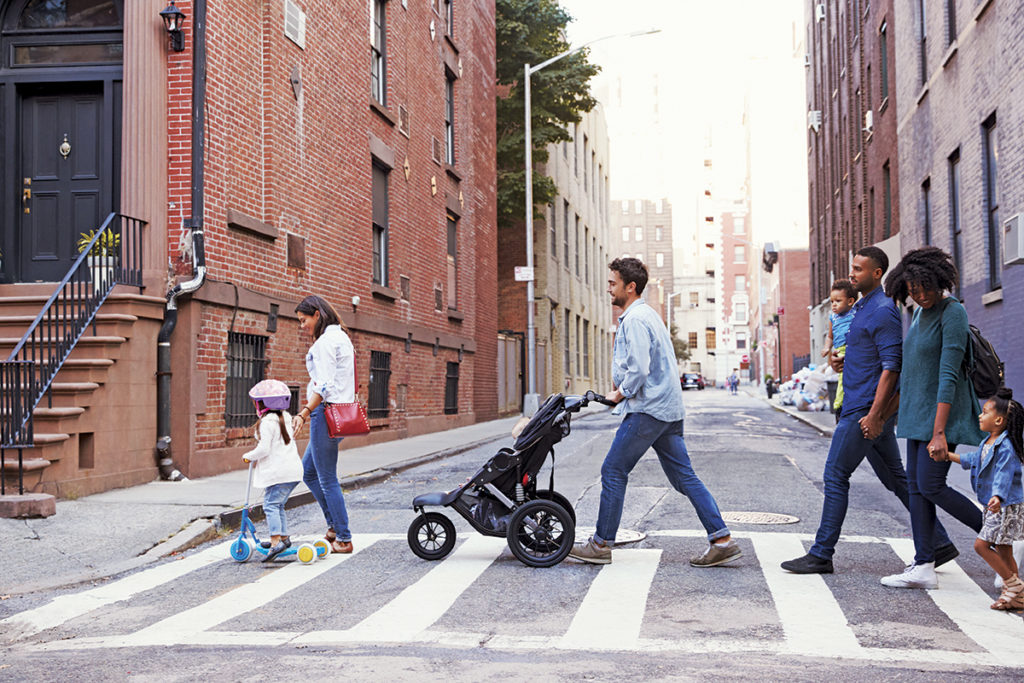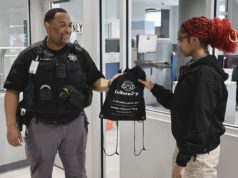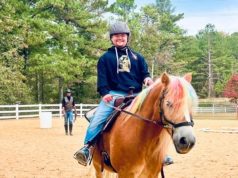By Karma E. Edwards, MSPH, NACDD Public Health Consultant
According to the Centers for Disease Control and Prevention, less than 25 percent of adults meet the minimum physical activity guidelines for aerobic and muscle-strengthening. The lack of physical activity can lead to poor health, debilitating diseases and conditions, some cancers, poor academic and job performance, and even an early death. At the National Association of Chronic Disease Directors (NACDD), we realize that exercise alone is not enough to make demonstrable gains in population health, but rather that communities must be built and designed for active living and active travel, where people can actively navigate to and from places by walking, rolling, biking, or taking public transit to the amenities they need for surviving and thriving.
This means we must encourage physical activity through the ways we design our communities, so that everyday destinations such as where people live, learn, work, play, pray, or receive care can be safely and actively accessed through people-centered environments. This also means that we must create better “places” for people to live, where all people regardless of race, ethnicity, ability or disability, social or economic class, age, or sexual orientation can live in affordable homes located in safe neighborhoods near well-funded schools and parks, where they are socially connected and have access to good healthcare, doctors, and places of recreation and worship.
Making our locations and places more active, walkable, movable, and economically viable is not just the responsibility of public health; it must involve colleagues in other disciplines. Healthy community design and re-design is a shared responsibility by the many different sectors that comprise a community and the many different disciplines that sustain a community. This is why NACDD’s Walkability Action Institute (WAI) intentionally recruits the involvement of public health’s counterparts like planning, transportation, parks and recreation, economic development, advocacy groups, academia, community-based organizations, elected officials, education, business and industry leaders, and many others.
The WAI is an innovative and proactive multi-day course designed to train interdisciplinary teams using some of the nation’s top experts to create pedestrian-friendly locations by addressing walkability, movability, and community and transportation design in the local community setting. Now in its 9th project year, the WAI has become a marquee project of NACDD’s Center for Advancing Healthy Communities after having provided training and assistance to interdisciplinary teams from 96 locations across 35 states and two island territories.
Participant teams not only learn about all-things walkability, movability, and built design, but also discuss upstream factors like housing and transportation access and get to explore related aspects of equity and social justice, such as racial/ethnic equity, disability inclusion, preventing gentrification, rethinking accessibility through Universal Design concepts, and how to invest in locations that are traditionally not invested in. We embody a “pilots-to-policy” approach, where we work with teams to implement low-cost demonstration and quick-build urbanism projects to recreate placemaking, increase community awareness, and gain the buy-in needed to make the permanent changes that can redesign locations for people, prosperity, and health. Additionally, participants get to engage in experiential learning activities during the course, occurring through outdoor walk/move audits, scavenger hunts, and photovoice homework assignments, which allows participants to observe and “feel” the tenets being taught through the course in a real-life setting.
Following course participation, the attending interdisciplinary teams develop unified action plans with goals for pursuing people-centered community changes through new plans and policies, improved systems, and on-the-ground changes to the built environment. Participants are also privy to join NACDD’s National WAI Alumni Network where they gain access to the shared WAI online warehouse, the latest innovative implementation strategies, and the ability to share, mentor, and network with the nation’s most successful adopters of the walkability movement.
What are the benefits of the WAI?
The WAI is a short-term investment of time and resources for the long-term gain of refabricating communities for people, place, and prosperity, bringing transformative impact and lasting benefits to participating locations.
Health and well-being. By enhancing walkability and movability, the WAI promotes physical activity, better health, and eventual improved health outcomes. Places and neighborhoods that are universally accessible and people-centered encourage residents to incorporate walking, biking, and other forms of active travel into their daily routines, reducing sedentary behaviors and promoting healthier lifestyles.
Improved sense of “place,” belonging, and social connection. Communities that are inherently more walkable and movable create opportunities for social interaction, fostering a sense of community and belonging among residents. Increased pedestrian activity can lead to more vibrant and inclusive public spaces, where people can gather, connect, and build relationships.
Economic development and vitality. People-centered design attracts more business and increases support of local economies. The long-term dividends of the WAI can stimulate smart economic growth and development, as people are more likely to visit and patronize local shops, restaurants, and services, thereby boosting local business and employment opportunities.
What does success look like in Cobb County?
The WAI can help communities in Cobb County reimagine and recreate how people and places healthfully interact in ways that are mutually beneficial and universally welcoming.

Downtowns can be filled with people from all different backgrounds enjoying and coexisting in public spaces or at town events together. Sounds of laughter and comradery can pervade; people of all ages and abilities can move about the town to the destinations they most need or want to visit; and a robust and vibrant existence of people, place, and prosperity can permeate economic vitality and establish a sense of belonging for all town members.
For municipalities in Cobb County, this vision could be made possible by bringing about new or updated plans or policies, such as Complete Streets policy adoption and implementation, or Bicycle/Pedestrian, Comprehensive Growth, or Master plan establishment. It could involve new smart growth development requirements, establishing overlay districts, transit-oriented development, or revitalizing local parks and trail plans.
Local systems improvements may take place, like development of shared performance measures by interdisciplinary partners, shared budgeting and funding acquisition responsibilities, creation of new project prioritization criteria, improved local permitting practices, and refining how all community members are considered and incorporated into community walkability, movability, and revitalization efforts.
The WAI could lend eventual, permanent, and sustainable changes to the physical built infrastructure, so that roads and public spaces are reconfigured to prioritize people over cars, promoting movement over being sedentary. New pedestrian treatments like roundabouts, bike boulevards, crossing islands, improved crosswalks, and sidewalks could be constructed. Spaces and places of business and convening could be made more inviting through improved beautification, signage and wayfinding, and colorful and effective use of paint and public art.
NACDD’s WAI teams have leveraged more than $284 million dollars to collectively achieve nearly 1,000 walkability and movability-related outcomes, reaching nearly 48 million people. This success exemplifies how modest investments in cross-disciplinary partnerships and necessary training events like the WAI can help communities leverage even more funds to recreate their built environment and benefit their community.
How can Cobb County get involved?
We must immediately transform our communities into walkable environments. By planning and implementing walkable communities, we can improve the quality of life for residents, enhance public health, and create sustainable, vibrant neighborhoods. To achieve this goal, we urge Cobb County to explore the possibilities offered by the NACDD WAI.
To cater to different needs and preferences, NACDD’s WAI provides customizable options, such as a four-day in-person course model, a virtual academy, or a hybrid combination of in-person and virtual learning. This flexibility ensures that Cobb County can effectively participate in this transformative initiative.
To learn more about how Cobb County can become involved in this crucial endeavor, please contact WAI project manager, Karma Edwards at kedwards_ic@chronicdisease.org.
Let’s seize this opportunity to create healthier, more livable communities. Please act now to be a catalyst for change.
WHY should Cobb County be part of the WAI?
- Receive guidance from the nation’s foremost team of experts
- Explore new and improved relationships with traditional and non-traditional partners
- Improved understanding of true and inclusive community engagement
- Opportunity to identify common ground and collective impact to positively affect people, place, and prosperity
- Ability to receive customized and groundbreaking training specific to Cobb County needs and growth and development goals
- Be better positioned for grant acquisition and diversifying funding portfolios for community infrastructure design and development.
WHO needs to be involved in the WAI?
- Residents from all community sectors, such as where people live, learn, work, play, pray, and receive care
- People representing a variety of ages, races, ethnicities, abilities and disabilities, sexual orientations, incomes, and neighborhoods
- People who work across all disciplines: health, economic development, planning, engineering, transit and transportation, housing, elected officials, public works, parks and recreation, education, business and industry leaders, non-profits, and other community organizations.
NACDD
Headquartered in neighboring Decatur, Georgia, the National Association of Chronic Disease Directors (NACDD) exists as a national non-profit professional association for chronic disease prevention for state, tribal, and territorial health departments across the United States, associated Territories, and Pacific Islands. More than 7,000 professionals participate with NACDD to address upstream factors in preventing disease and promoting health.




